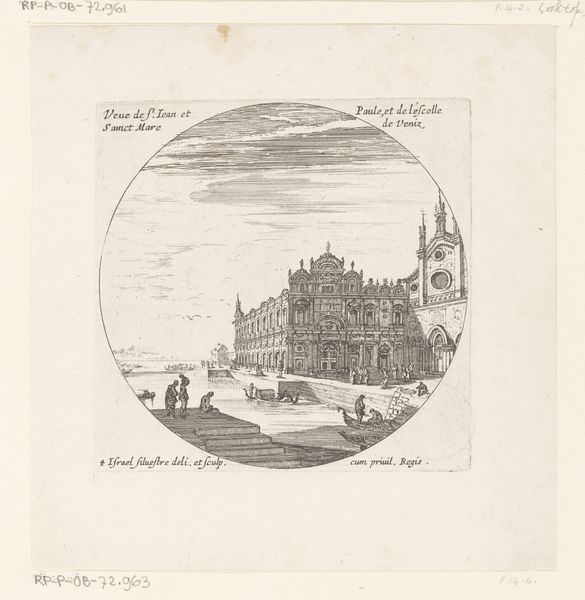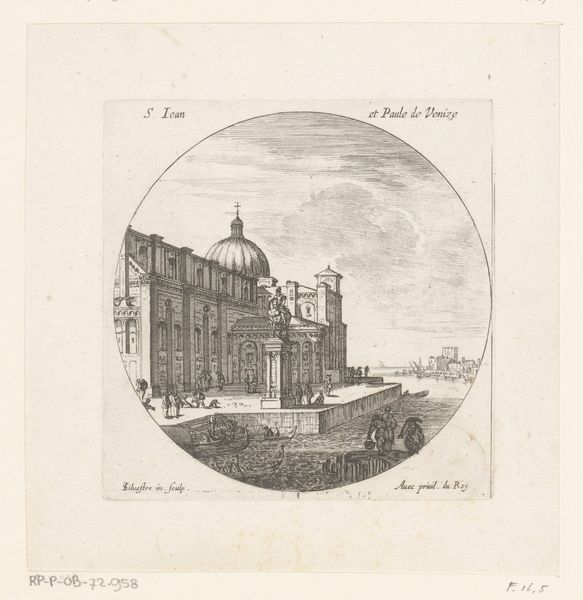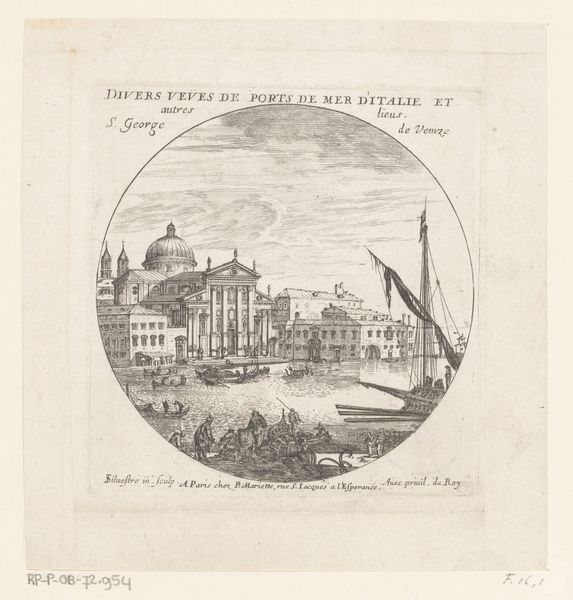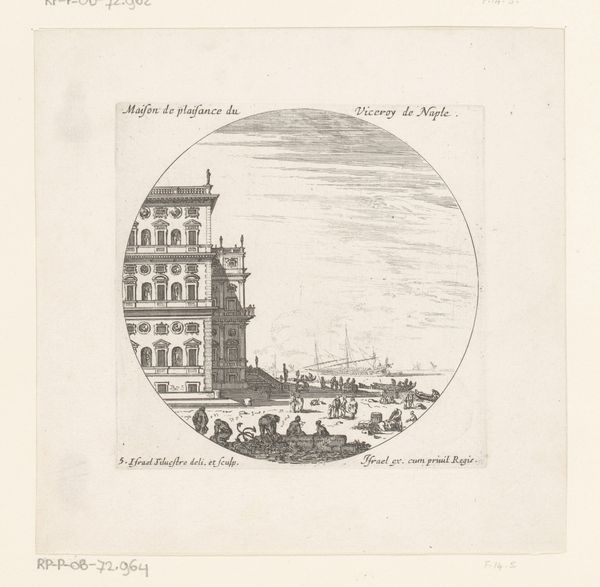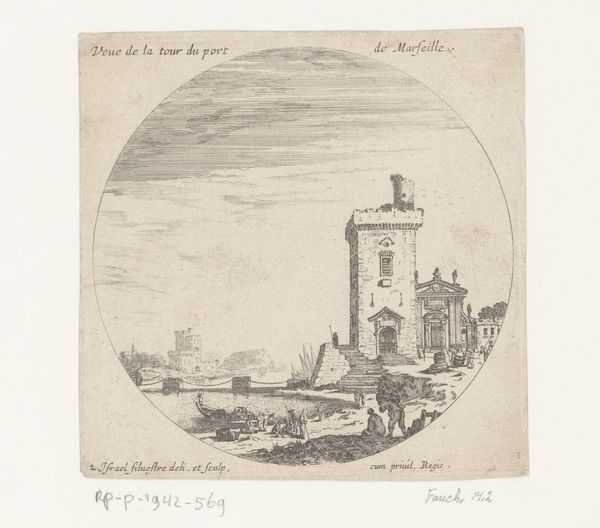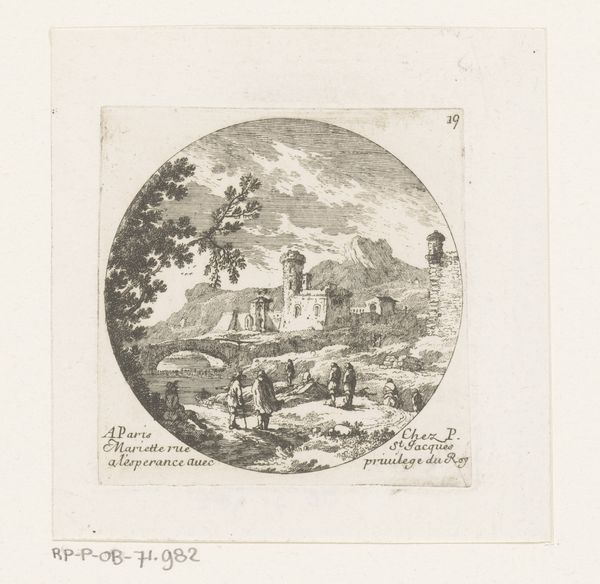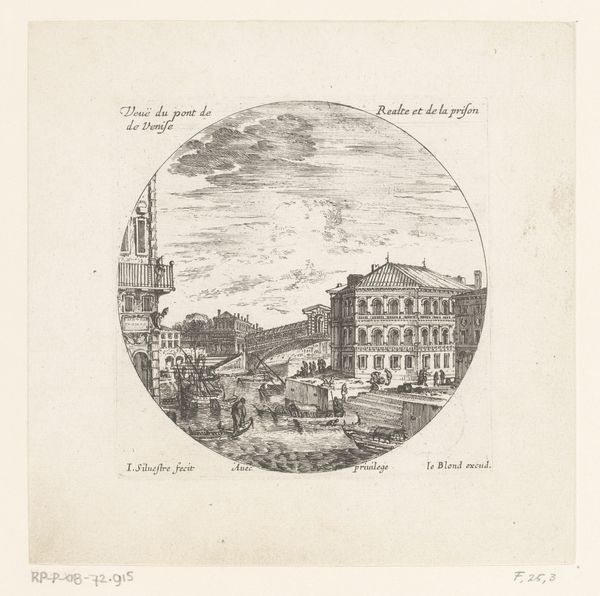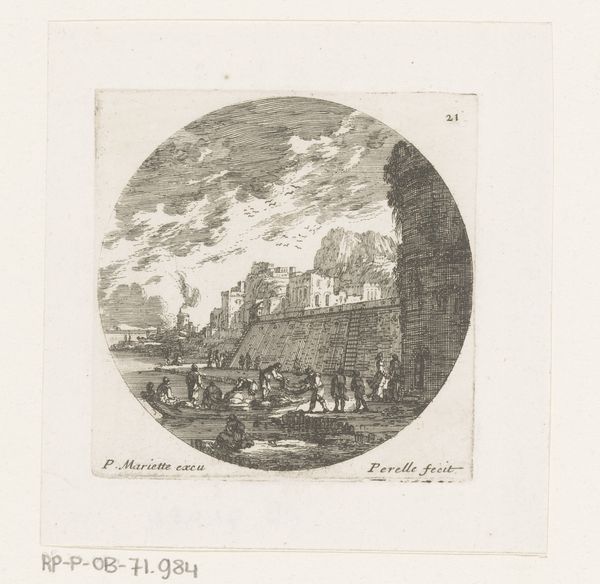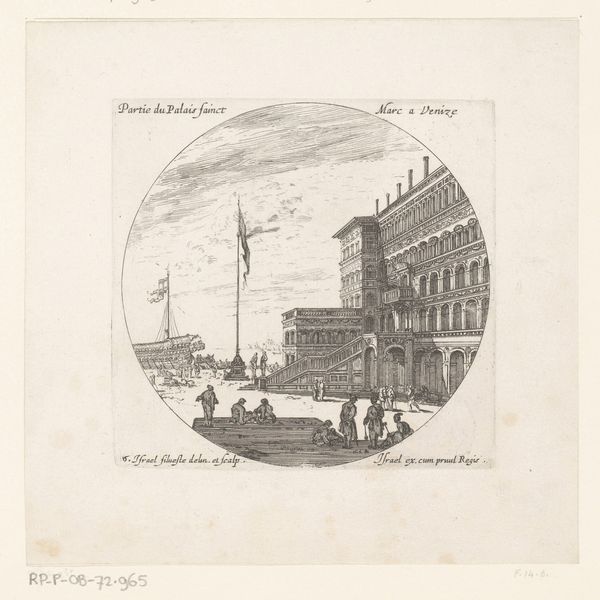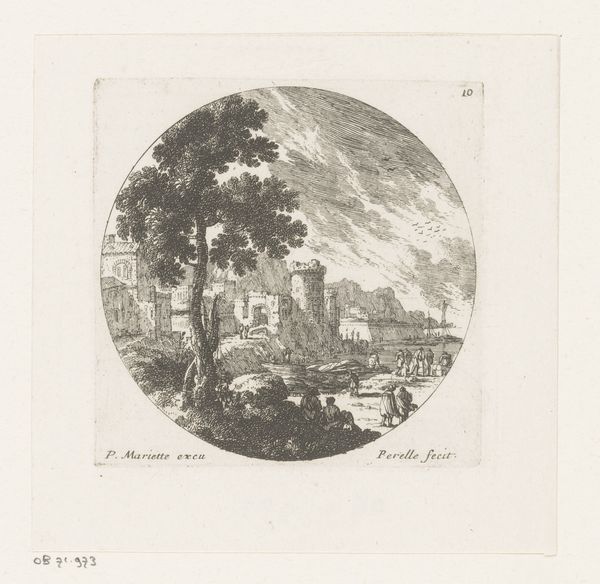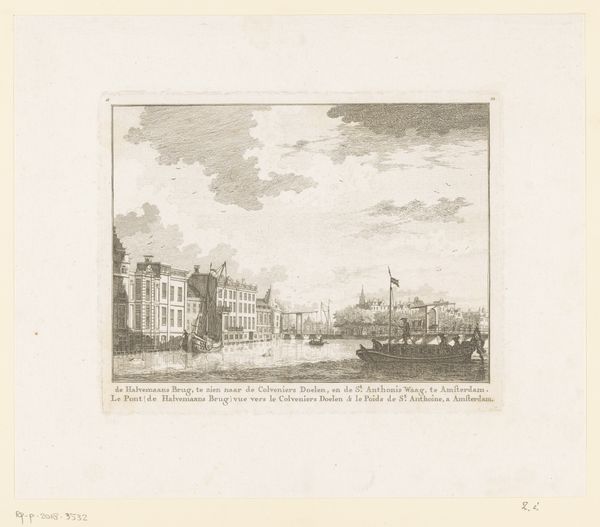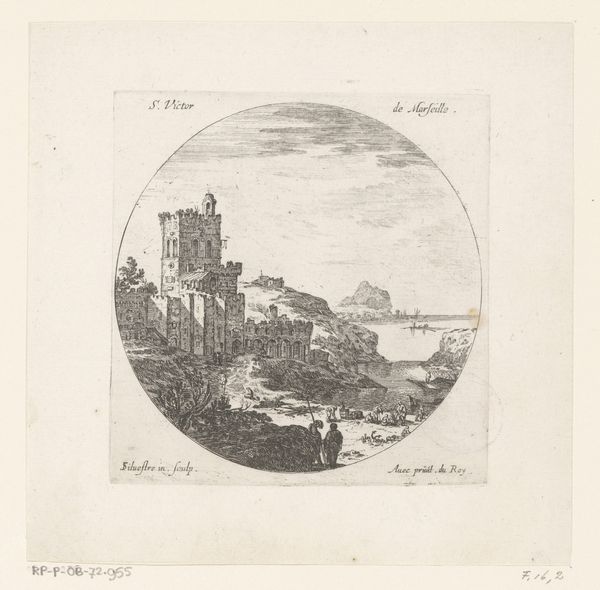
drawing, print, etching, engraving
#
drawing
#
aged paper
#
light pencil work
#
baroque
# print
#
etching
#
pencil sketch
#
old engraving style
#
landscape
#
personal sketchbook
#
ink drawing experimentation
#
pen-ink sketch
#
sketchbook drawing
#
cityscape
#
pencil work
#
sketchbook art
#
engraving
Dimensions: height 117 mm, width 118 mm
Copyright: Rijks Museum: Open Domain
Israel Silvestre created this print of the San Marco in Venice using engraving, a process of cutting lines into a metal plate, in the 17th century. The artist would have used a tool called a burin to carve the image into the copper, a process demanding great precision and skill. Engraving allowed for the relatively easy reproduction of images. Prints like this one became increasingly popular as ways of disseminating images widely, in a pre-photographic era. Note how Silvestre paid careful attention to the architectural details of the Basilica and Doge's Palace. The crisp lines create a sense of depth and texture, while the circular frame gives the scene a sense of contained elegance. The production of prints like these supported a whole economy of makers. From the mining of copper, to the skilled labor of the engraver, to the distribution and sale of the final product, the print speaks to a wide network of activity. It reminds us that even seemingly simple images have complex origins in materials, making, and social context.
Comments
No comments
Be the first to comment and join the conversation on the ultimate creative platform.
